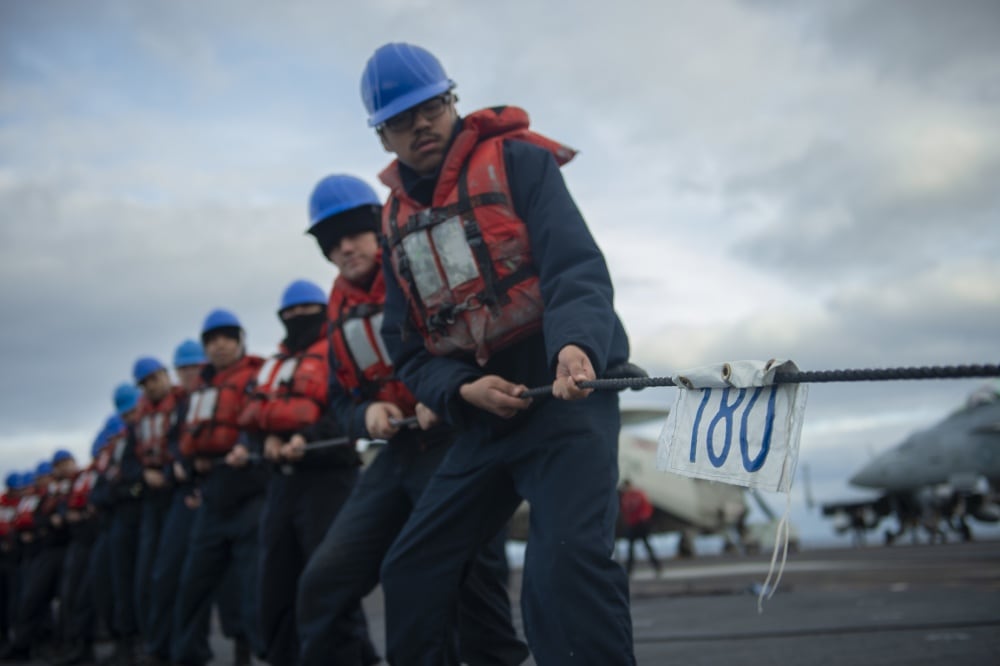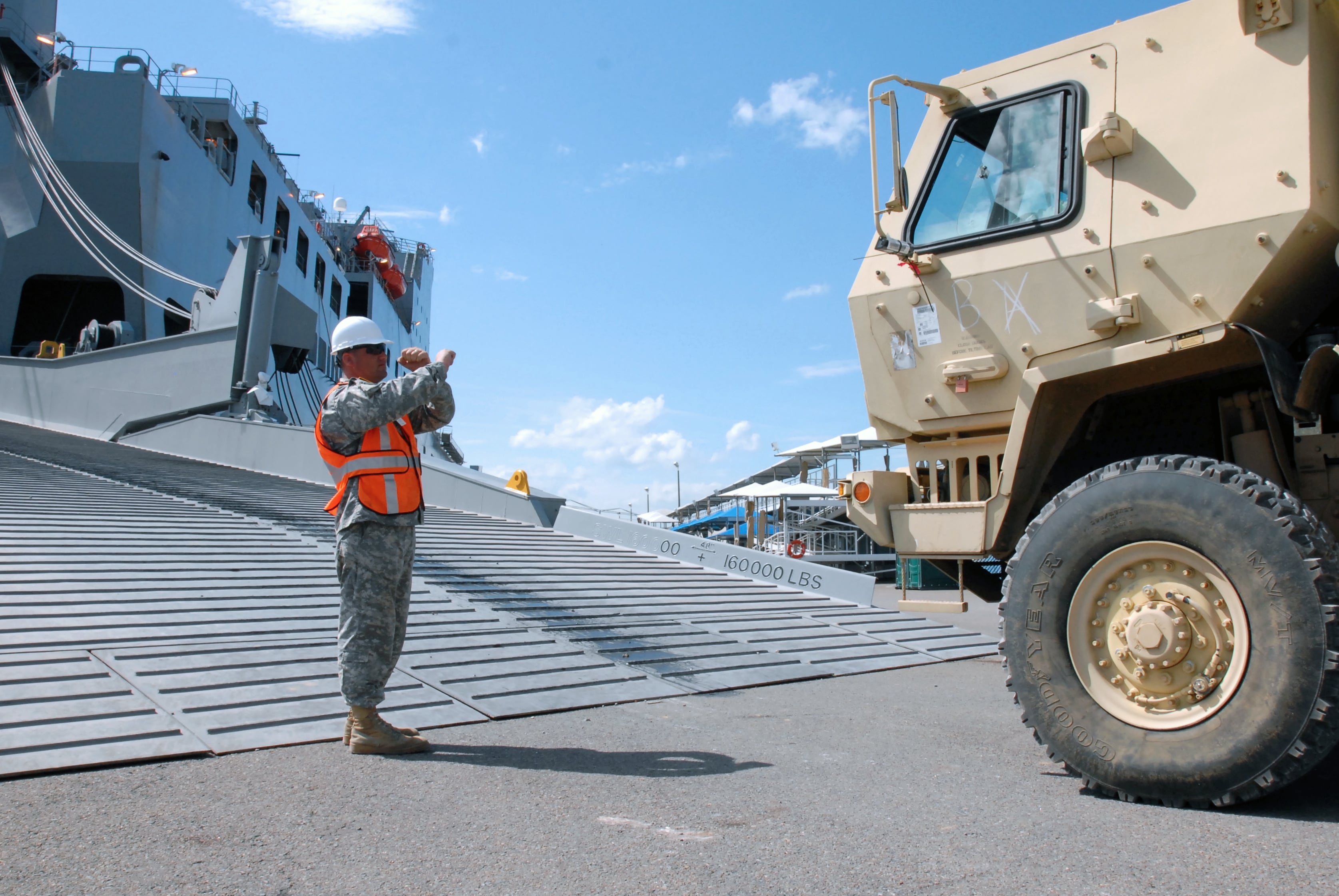As soldiers begin arriving in Europe for the massive Defender-Europe 20 exercise, a convoy of Navy, Military Sealift Command and merchant ships are testing the movement of Army equipment across the Atlantic Ocean for the first time since before the end of the Cold War.
Guided-missile cruiser Vella Gulf is escorting roll on/roll off ship Benavidez, operated by Military Sealift Command, and U.S.-flagged vehicle carriers Resolve and Patriot. They will participate in a simulated adversarial transit exercise to test the fleet’s movement across the Atlantic while bringing about 1.3 million square feet of Army equipment from the U.S. to ports in Europe, Navy officials say.
The simulation will include virtual and live scenarios and incorporate anti-submarine and anti-surface warfare elements, Cmdr. Troy Denison, director of current operations at 2nd Fleet said in a phone interview Friday. Aircraft carrier Dwight D. Eisenhower along with a submarine and a P-8A Poseidon from Patrol Squadron 4 “sanitized” the undisclosed battle space for the exercise, setting it up for the simulated enemy so “the convoy could also have an encounter with them as well and react,” he said.
Convoys were critical for moving supplies and troops between the U.S. and Europe during both World Wars. This is the first Navy convoy operation in the Atlantic since 1986, Denison said.
“This is really the first time in quite a while that we’ve conducted convoy operations,” he said.
Defender-Europe 20 is the largest deployment of soldiers from the U.S. to Europe in a quarter century and is designed to test the military’s ability, along with its allies, to move combat forces and equipment quickly. Equipment is traveling from ports states and arriving in six European countries.
RELATED

The operation comes as Navy leaders caution about the need to wrangle control of the Atlantic amid increased Russian activity. In early February, the Navy’s 2nd Fleet commander Vice Adm. Andrew “Woody” Lewis warned that sailors need to start treating the Atlantic as a contested battle space.
In a wartime scenario, 90 percent of cargo moved into theater operations is taken by Military Sealift Command, underscoring the need for more integrated training, said Kim Harriss, a supervisory marine transportation specialist for the command.
RELATED

Benavidez left Beaumont, Texas Monday and the convoy began Thursday, Vella Gulf commanding officer Capt. Andrew Fitzpatrick said in a call with reporters from the cruiser Friday.
“We are prepared to thwart any sorts of aggressive behavior that we’re confronted with, whether they’re aircraft, surface ships, submarines and other types of attack, which does include cyber warfare,” Fitzpatrick said.
Capt. Hans E. Lynch, commander of Military Sealift Command Atlantic, said MSC has been hampered by a lack of investment in command and control infrastructure. It is relying almost entirely upon commercial communications services, including satellite phones, he said, and as a result there’s a greater emphasis on the role of watch standers.
Identifying gaps in equipment and planning is a focus for MSC in the exercise, Lynch added.
“It can be very challenging for us to even communicate with ships that are right next to each other,” Lynch said in a call from the Benavidez.
Courtney Mabeus-Brown is the senior reporter at Air Force Times. She is an award-winning journalist who previously covered the military for Navy Times and The Virginian-Pilot in Norfolk, Va., where she first set foot on an aircraft carrier. Her work has also appeared in The New York Times, The Washington Post, Foreign Policy and more.




